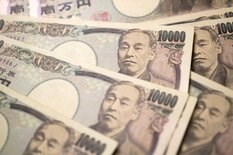
Fed rate hikes typically do not immediately slow US economic growth. Policies take time to affect markets. Historically, it has taken an average of 2-3 years from the start of a rate hike cycle to the start of a recession.
In contrast, the labor market is seeing a modest rise in unemployment and slowing wage growth. Whether this growth turns into a full-blown recession depends on the extent of fiscal stimulus tapering, rising mortgage rates (which cool the housing market) and rising fuel prices. Meanwhile, spending has fallen only slightly.
According to data released by the US Bureau of Labor and Statistics on November 14, the US consumer price index (CPI) growth rate decreased from 3.7% in September to 3.2% in October. This is more positive than economists' forecast of 3.3%. Because core inflation is lower than expected, this is considered a factor that makes the Fed's interest rate hike in December almost impossible. These market expectations have caused the USD index (DXY) to fall sharply to a two-month low.
Before the US Department of Labor report was released, the market estimated an 86% chance that the Fed would keep its benchmark interest rate unchanged at its December meeting and a 25% chance of raising interest rates by 25 basis points in January 2024.
However, those expectations have changed dramatically: Investors are almost 100% confident that the Fed has completed its current tightening cycle and may even cut rates at least four times by 2024. Deflation is likely to force the Fed to lower its benchmark interest rate by the end of 2024 to 2.50%-2.75%.
The slowdown in the US labor market, lower inflation and market expectations of interest rate cuts in 2024 are factors that are pushing the USD to weaken in the short term. The clearest evidence is the USD/JPY pair, which is expected to narrow to around 144 points by the end of this year. This is an opportunity for the Yen exchange rate to narrow.
Source



































































































Comment (0)